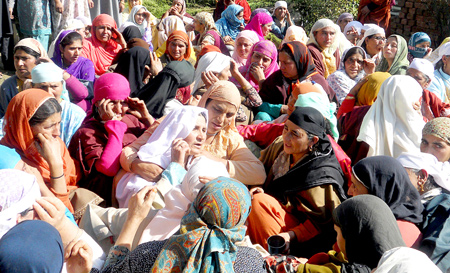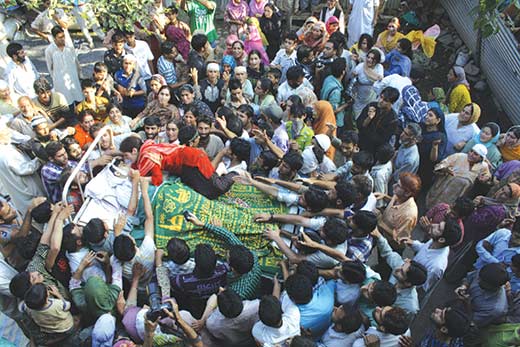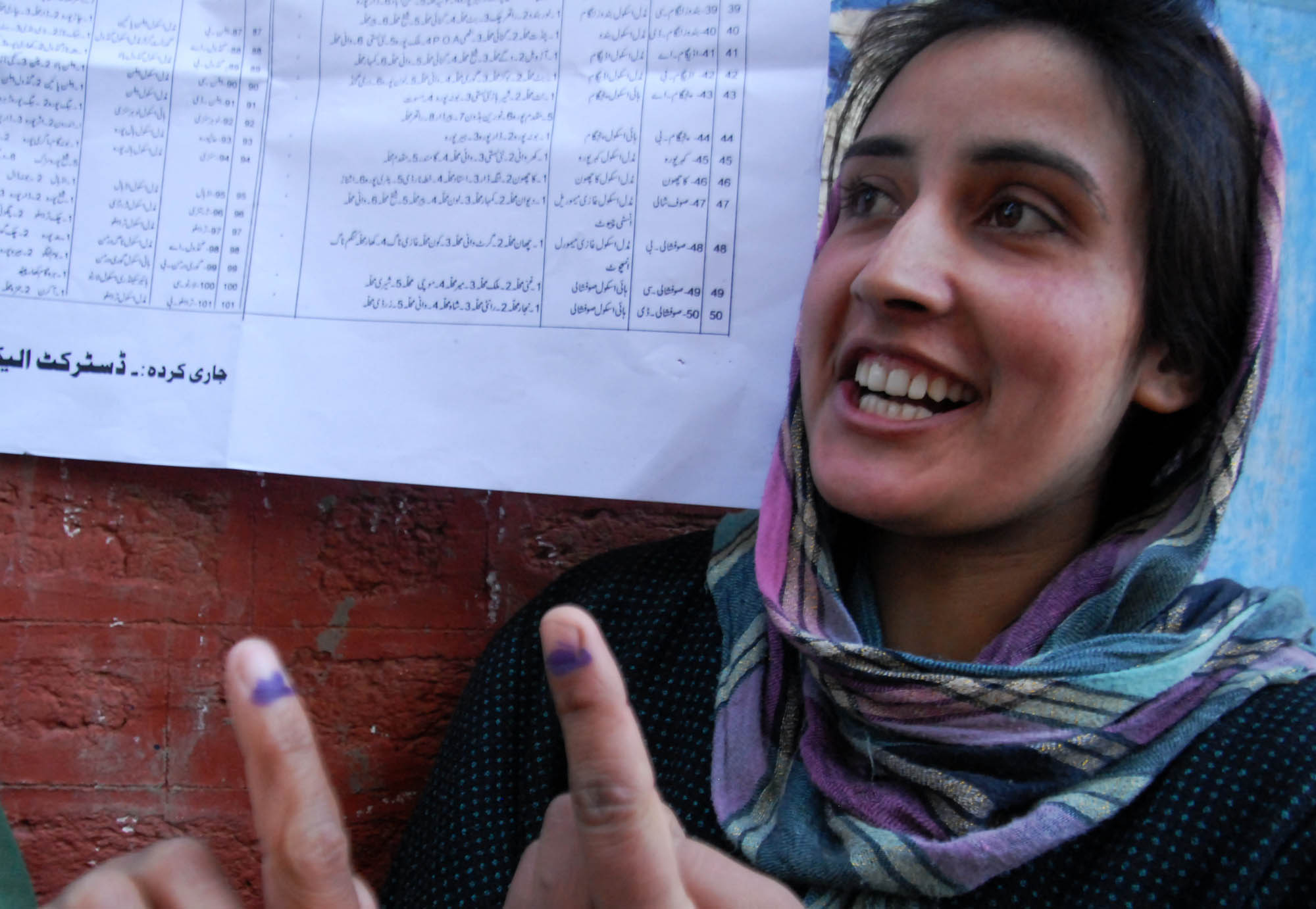water and electricity. Ali Mohammad Shah, a resident of Raipur says, “We had forced Yatoo sahib to stand in the elections. We wanted electricity and clean water, which is not being provided to us by the government.” Presently, there is no hospital for more than 35,000 residents of the village. There is only a dispensary. If someone falls sick, he/she has to be taken to the nearby Pattan town in a cart!

After Yatoo’s victory, the village had started reaping the benefits of his election. Ghulam Mohiudin Sofi, an elderly man in his eighties, says the water supply plant was upgraded with the help of Yatoo. “He made it sure that water supply scheme was upgraded. It had never happened before.” Yatoo’s dream, says a panch of the area, was to get a hospital in the village.
Now, when Shahnawaz looks at his father’s picture, he sobs silently, “I want to ask Jihad council whether my father had committed any sin by becoming a Sarpanch. If someone proves that he had done something wrong, according to Quran, then they did the right thing by killing him. He should have been told that you should resign but why kill him? He was never given a chance.”
Police officials believe there are only three militants active in the area. All of them travel from Sopore to Palhalan. “No one is based out of that area. Whenever they want to create fear, they come and shoot someone and leave the place,” a senior police official said. Apart from Sopore, Palhalan has been one of the ‘red zones’ for the security agencies. “It has been one of the most volatile areas during militancy and even after that” the official said.

In 2010, Palhalan witnessed the maximum number of deaths in entire north Kashmir. The total number of deaths reported from the north Kashmir was 32. Majority of the villagers are associated with Jama’at-i-Islami, which has strengthened their grip over the village by opening a number of madrassas. Whenever there is a call for shutdown by Syed Ali Shah Geelani, the villagers follow it obediently.
In the recent past, Palhalan was the most curfewed village. When the rest of Kashmir enjoyed peaceful days in turbulent times in 2008 and 2010, Palhalan once remained under siege for 29 days at a stretch, primarily because the residents used to block the highway.
During one such blockade, Adil Ramzan, 12 a Class VII student became Palhalan’s first casualty. He had left his house after lunch to play cricket but ended up joining his friends in a pro-freedom demonstration. He was shot in his back. His body was brought home through wet paddy fields because the entire highway was blocked. “The soldiers didn’t allow him to be operated in the hospital. They fired inside the hospital and assaulted the doctors which caused delay,” says a resident, Majid Rashid Gilkar
Adil, in fact, was not the first casualty in his family. His grandfather, Ghulam Mohideen Sheikh, a Jama’at member, was also killed in 1999 by unidentified gunman. Sheikh’s two brothers, who were Hizb ul Mujahideen militants, were killed in encounters. Syeda, Adil’s mother, says she is ready to sacrifice another son for the cause of Kashmir. “I don’t cry when I remember my son. It was God’s wish. Why should we repent it? We didn’t accept even compensation from the government because it was like selling the blood of a martyr.”
 Palhalan is a densely populated village and home to many Islamic originations, besides being a strong hold of Jama’at which has strong roots here since 1975 when its leader, Zahoor ul Haq, started madrassas here. Palhalan soon became a stronghold of the Hizb-ul-Mujahideen, the militant wing of Jama’at. The political radicalism in the young was cashed not only by one group but many. The first ever political killing in Palhalan was of a Congress worker, Ghulam Ahmad Sheikh, 54, who was shot in 1991. Tantray Mohalla, Sofi Mohalla and Rai Pora have seen bulk of the deaths: 325 people from 150 households in these areas have been killed in the past two decades. Out of them, 180 were directly or indirectly related to militancy.
Palhalan is a densely populated village and home to many Islamic originations, besides being a strong hold of Jama’at which has strong roots here since 1975 when its leader, Zahoor ul Haq, started madrassas here. Palhalan soon became a stronghold of the Hizb-ul-Mujahideen, the militant wing of Jama’at. The political radicalism in the young was cashed not only by one group but many. The first ever political killing in Palhalan was of a Congress worker, Ghulam Ahmad Sheikh, 54, who was shot in 1991. Tantray Mohalla, Sofi Mohalla and Rai Pora have seen bulk of the deaths: 325 people from 150 households in these areas have been killed in the past two decades. Out of them, 180 were directly or indirectly related to militancy.
Today, the village presents a different picture. Since mid 2000, there has been a revival of sorts in the ideological divides. Many mosques and seminaries funded by mysterious groups have mushroomed in the village. The thrust of the preachers at these institutions has always been on evoking the sprit of Islam observed in Prophet Muhammad’s time (PBUH).
Although Salafism is an ideology exported from Saudi Arabia, it has been gaining popularity in most of the Kashmir. The Salafis ask for the implementation of Islamic law in all Muslim societies and this wave of radicalism has swept across Palhalan which was, until recently, alien to Kashmir. But Salafism is not the only ideology that has made inroads into Palhalan, “Almost all sects of Islam exist here. Most seminaries teach the religious education in different ways,” a local















